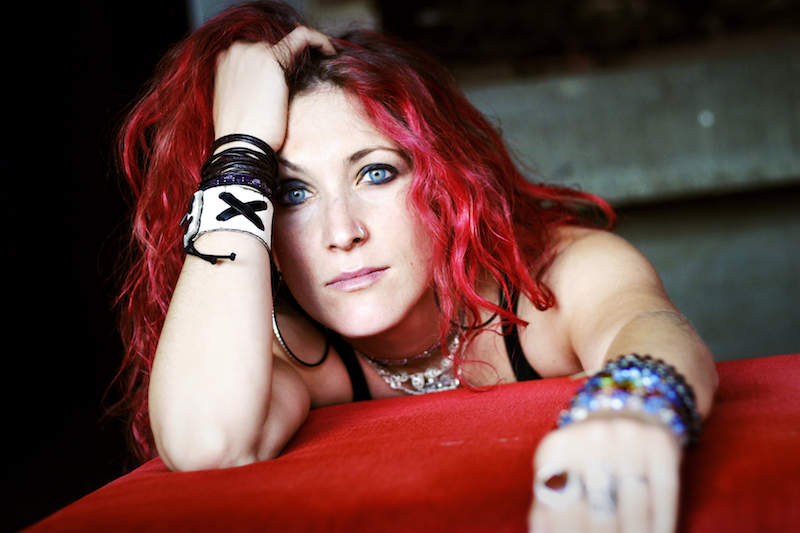By Mark Frieser
I had the pleasure to meet Diane when she joined me as a panelist at SXSW earlier this year for a discussion of music, brands and advertising, centering on the work she did with the McDonald’s brand as its Creative Director for over 15 years.
Having left her role at McDonalds in April, where she defined, managed, developed, refined, and executed some of the brand’s impactful national and international campaigns (centered around the “I’m Lovin’ It” framework), Diane now is working as a visual artist and with several companies helping them define their creative and branding strategies.
Last week, Diane took time out to speak to us about her approach to creative, how she built some of McDonald’s most successful campaigns, and the role that music had in the process.
Q1. Diane, please tell us about yourself, what you do, how you came to work as the creative director at McDonalds and what you’re working on now.
A. I have an art background and spent the first half of my career at a global agency in Chicago. As a Group Creative Director I led large creative teams towards developing marketing and new business campaigns for corporate brands.
I did this until one of the brands, McDonald’s, asked me to work for them. Since then, I spent the last fifteen years shaping and guiding award- winning, business-building ideas through a complex organization. Having left McDonald’s last April, I am now focusing on writing, painting and doing marketing/creative consulting work focusing on shaping brand personas for small digital companies.
Q2. So let’s talk about McDonalds as a brand. Obviously, McDonalds is a global brand which has to at once provide customers with a consistent brand experience while at the same time accounting for regional tastes and markets in its marketing.
How did you, as the creative director, work with the various creatives, your agency and your executive team – to insure there was a consistent experience of the brand while adjusting the messaging to fulfill the needs of local markets?
A. When I was at McDonald’s, all of the creative work was developed within the “i’m loving’ it” campaign framework.
For each individual promotion, I worked collaboratively with teams from various areas of expertise to identify and shape national ideas that were adapted by local markets using national creative design elements. We held field webcasts to communicate our approach and ensure holistic execution on an international and local level.
3. And how does music come into play with the McDonalds brand’s messaging and marketing?
What’s the thinking process in terms of the way music is used across the brand experience, including advertising, live events, at points of sale an other areas that connect the consumer with the brand? How important is music to the way consumers experience the brand?
A. I believe that music has always been very important to McDonald’s. For example, the “i’m loving’ it campaign was launched as a music based idea.
(Note – To get an idea of how music-centric the campaign was – it launched in 2003 with the integration of a song created just for the campaign – “I’m Lovin’ It” as sang by Justin Timberlake):
My responsibility as a Senior Director in the US Marketing Creative Department was to ensure all newly developed creative ideas reflected the consumer voice and a relevant musical component. We would use different genres of music to emotionally connect different groups of people to the brand—either to a mass audience or smaller niche target, depending on the promotion.
Q4. Outside of commercials, how does McDonalds work with music – live event support/sponsorship? Artists? What’s the total scope.
A. It varies based on the sponsorship, band or individual artist’s contract. I recall that McDonald’s felt it was important to form healthy relationships that benefited both the brand and the artist/band. During my career there, McDonald’s supported artists/bands at public events and sponsored music events at local venues.
Some of these included Gospel Fest, Latin Grammys, Essence Festival and most recently SXSW in Austin.
5. And what kinds of resources are used to source music? Agencies? Companies? Individual artists? Give us an example of
how the process works.
A. Usually we relied on our agency partners to source music during the production process.
But I liked to get the music companies involved earlier in the process, so that they understood the brief—who the target was and what our objective was. Doing it this way always rendered spot on music that brought the idea to life in ways that connected with consumers on a much deeper, more relevant level.
6. And moving beyond McDonalds, let’s talk about your philosophy as a creative director and where you think music comes into play – and when it doesn’t – when developing the messaging and promotion of a brand.
A. I believe music and sound add emotional and financial value to a visual story. Without these an idea falls flat. It creates special moments by sparking memorability, and has the power to literally move people. Ultimately, that’s what brands want to do—get consumers to feel good about buying their product and trust their brand.
7. Finally, how can people in the music business connect with the McDonalds brand and with brands in general – how can they help make your – and the brands job – easier.
A. It’s all about relationships. Artists/bands need to find a way to build relationships with key individuals within a brand, and vice versa. And the partnership should be mutually relevant, meaning that it should have value beyond commercialism. Ideally, there should be a social cause, too. In my opinion, a brand’s relationship with an artist/band should be a positive union that makes the world a better place.
If you want to find out more about Diane and her work visit: http://www.dianeandreoni.com/




